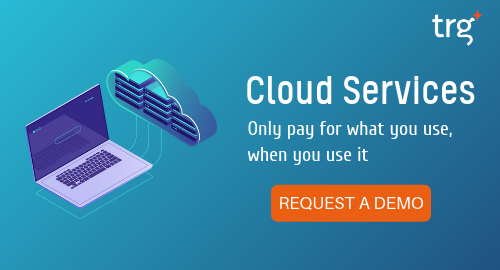Which Form Of Cloud-based Support Is Better, Multi-tenancy Or Hosted Services
No longer a novel technology, deject is increasingly becoming the mainstay of the modern enterprise IT architecture. Nonetheless, navigating a myriad of cloud-related concepts tin yet bear witness challenging. Should your business opt for public cloud or individual deject? What does it hateful if your software is single-tenant / multi-tenant? Are SaaS and hosted software solutions the same? This article will go you upwards to speed with the fundamentals of cloud calculating. Simply put, cloud computing is the delivery of on-demand computing resources through the internet. These resource include tools and applications similar information storage, servers, databases, networking, and software. Cloud computing offers faster innovation, flexible resources, and economies of scale. Every bit a result of these benefits, deject computing has become an indispensable part of modern life. Most of us are using deject computing applications on a daily footing, even if we are not aware of them. Notable examples include Gmail, Dropbox, Salesforce, HubSpot, Microsoft 365, etc. Still, there is no denying that cloud computing is quite a generic term, used to refer to many different classifications, types, and architecture models. Read more: The Cloud: A Storm of Confusion Dorsum to peak Cloud computing can be categorised into three full general types: Public clouds are owned and operated by 3rd-party service providers, which deliver their calculating resources, like servers and storage, over the internet. The public cloud offers customers of all sizes extensive choices of solutions and computing resource, as well as low toll and high elasticity. All of which makes public cloud the almost popular model of cloud computing services. Services on the public deject may be free, freemium, or subscription-based, wherein customers are charged based on the computing resource they eat. Read more: Cloud-Done vs. Cloud-Native: What Are They & How to Spot Them? The services provided past public cloud tin can range from basic emails, and apps storage, to more demanding tasks such as serving as a large scale infrastructure platform for software development. With public cloud, the service provider is the i who is responsible for all of the maintenances, management and development of the pool of computing resources used past customers. Back to top Contrary to public cloud, private cloud is whatsoever cloud calculating solution that is used by a single organisation. The organisation that uses private deject does not share these resources with whatever other customers. Many use this type of cloud due to its security, exclusivity, flexibility, and efficiency. Private cloud tin can exist located physically on the company on-site infrastructure, or operated past a tertiary-party service provider. Individual deject tin be customised to meet the unique business organization and security needs of the organisation. With more visibility and control into the infrastructure, organisations tin operate compliance-sensitive It workloads with high security and functioning. However, all of these benefits come with a higher price tag, which is the chief reason for its unpopularity. Read more than: Deject Adoption Strategy: Deject-Beginning vs. Cloud-Only Back to peak Hybrid cloud is any organization that incorporates both individual and public cloud solutions. Organisations that use this type of cloud can use the public cloud for not-essential and non-sensitive data to keep the cost downwardly and use their individual deject for more of import and sensitive tasks for optimal security. As a combination of public cloud and private cloud, hybrid cloud inherits both the positive and negative traits of the two. With a well-integrated system, organisations tin can expect more security, control, flexibility and reliability from their cloud services. However, hybrid cloud's weakness is its added complexity, too as high cost. Read more:Cloud 101 - A quick guide to Cloud ERP: Benefits & Drawbacks Back to acme The most popular models of cloud computing are PaaS (Platform every bit a Service), IaaS (Infrastructure as a service), and SaaS (Software every bit a Service). These models serve unlike purposes and needs. Software every bit a Service, besides known every bit deject application services, represents the most widely used option for firms in the deject service market. SaaS uses the internet to deliver applications, which are managed by a third-party provider, to its users. Most SaaS applications run directly through your web browser, which means they do not require any downloads or installations on the customer-side, which eliminates the need for Information technology staffs to perform such tasks. Vendors manage all potential technical bug, such equally data, middleware, servers, and storage, resulting in a well-maintained, well-supported however agile It structure for the business organization. The main selling points of SaaS are its simplicity, cost-effectiveness and convenience for the user. With the service provider doing nigh of the tasks, ranging from maintaining, managing and developing the organisation, to handling technical issues and customer back up, SaaS can assistance companies redirecting their resources to their core businesses. Withal, SaaS has its cons every bit well. Such every bit low interoperability, lack of control for the client, and low customisation. Read more: How AWS Manages and Maintains Their Massive Data Centres Back to elevation Cloud platform services, also known as Platform equally a Service (PaaS), provide deject components to certain software while existence used mainly for creating applications. In other words, PaaS offers a framework for developers upon which they tin can build applications. PaaS deliver their services through the spider web, much similar SaaS. Because all servers, storage, and networking tin can be managed by the enterprise or a third-party service provider, developers tin focus their resource on making software instead of worrying about operating and maintaining of the calculating infrastructure. This kind of deject service is highly bachelor and, for most of the time, cost-effective. The pitfalls to PaaS is quite like to that of SaaS, i.eastward. potentially low customisation, hard to migrate to other providers, and low operational control for customers. Read more: SAP vs. Infor – Software Giants Face Off Over Deject Strategy Back to top Infrastructure equally a service (IaaS) is a blazon of deject computing service that offers essential compute, storage, and networking resource on demand. IaaS allows customers to operate their businesses with a high level of calculating ability without the need to invest in hardware, nor managing and developing a physical data centre. IaaS delivers cloud computing services, including just not limited to servers, network, operating systems, and storage, through virtualisation technology. These cloud servers are typically provided to the company through a dashboard or an API, giving customers total control over the entire infrastructure. IaaS provides the same technologies and capabilities as a traditional data eye without having to physically maintain or manage information technology. IaaS clients can still access their servers and storage direct, but it is all outsourced through a "virtual data centre" in the cloud. Reverse to SaaS and PaaS, IaaS gives customers much more control over the services. In most cases, customers take complete control over the databases. This, however, ways that customers are responsible for the Os, middleware, runtime, etc. With many benefits such as scalability, flexibility, more control for the customers, and price-effectiveness, IaaS is a very pop pick for many firms who want to utilize and control their system without having the cost of purchasing hardware. Back to summit SaaS and Hosted software offering some quite similar benefits, however, they have some key differences, equally well as their own pros and cons. To be able to cull the correct option for your needs, is it important to understands the differences betwixt the two, and what they offer. Software as a service (SaaS), as mentioned above, are applications that are delivered to customers through the web. SaaS software does non require any installation from the end-users, and is provided by the service provider. This form of cloud service is very popular due to its reliability, depression initial costs, and convenience as the service providers practice nigh of the management and maintenance. Yet, SaaS has its ain drawbacks, such as lack of control and customisation for the client as well as potential college long-term cost. Another arroyo to deliver the software to cease-users through the internet is hosted software. Hosted software, in elementary terms, is software that a customer buys and owns, but is installed via a hosting middle instead of on the customer's servers. As the customer owns the software, they can choose to update the software whenever fits them most, too as having more than customisations on the production. On 1 hand, in that location are a few disadvantages to hosted software, i of which is that the customers will accept to get more involved with the software. Installing, maintaining, and updating the software requires resources, provided either by the customer's It personnel or a managed service provider (MSP). Additionally, because the customer owns the software, they notwithstanding have to pay a high upfront license fee instead of a much lower monthly rental fee of the SaaS model. On the other mitt, the SaaS' pay-as-you-go model may result in a college full cost in the long run. Because the customer rents, rather than own, the software, customisation is limited compared to hosted software. Read more: How to Adopt Cloud Back to top Single-tenancy or multi-tenancy is some other crucial consideration in deject services. What are their pros and cons? And which model should you choose? A single instance of the software and supporting infrastructure serves a single customer. With single tenancy, each customer has their independent database and example of the software. Essentially, there is no sharing happening with this option. Read more: Cloud Vendors - What Practice They Have to Offer? In a single-tenant compages, the cloud service provider will aid in managing the software instance and dedicated infrastructure while still lending nearly total control to a single tenant for customisation of software and infrastructure. Some common characteristics of single-tenancy models are that they tend to provide a loftier level of user date and user control, as well as reliability, security and backup ability. Potential benefits of the single-tenant model are high levels of customisation, reliability, and security. All the same, these benefits upshot in a higher toll for customers. Back to top Multi-tenancy means that a single instance of the software and its supporting infrastructure serves multiple customers. Each client shares the software application and also shares a single database. Each tenant's data is isolated and remains invisible to other tenants. This type of architecture is very popular in the SaaS environs. In comparison to single-tenancy, multi-tenancy is cheaper, has efficient resource usage, has a lower maintenance cost and a potentially larger computing chapters. Are y'all because moving your key business organization processes to the cloud? Or simply interested in learning more about different types of cloud services and how they tin can benefit your employees? Share your concerns with united states of america today! 
Table of Contents
What is Cloud Calculating?
Public vs Private vs Hybrid Deject
Public Cloud
Private Cloud
Hybrid Cloud
PaaS vs IaaS vs SaaS
Software as a Service (SaaS)
Platform as a Service (PaaS)
Infrastructure as a Service (IaaS)
Software as a Service (SaaS) vs Hosted Software
Single-tenant vs Multi-tenant
Single-tenant
Multi-tenant

Topics: Technology trends, Cloud Calculating
Which Form Of Cloud-based Support Is Better, Multi-tenancy Or Hosted Services,
Source: https://blog.trginternational.com/cloud-computing-fundamentals
Posted by: fordwhings.blogspot.com


0 Response to "Which Form Of Cloud-based Support Is Better, Multi-tenancy Or Hosted Services"
Post a Comment